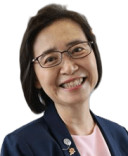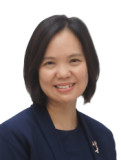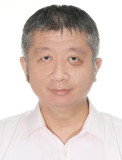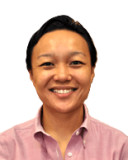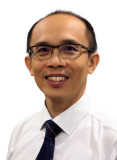HealthManagement, Volume 24 - Issue 5, 2024
In Singapore’s ageing society, informal caregivers often face challenges, including burnout and the risk of depression. A program called "Project Carer Matters 2" has been introduced to counter this tendency. It focuses on equipping caregivers with skills, providing emotional support and integrating technology for home care monitoring. The initiative addresses gaps in caregiving resources, builds community connections and aims to scale nationally, ensuring sustained caregiver support.
Key Points
- Rapid ageing in Singapore’s society increases the caregiving burden on family members.
- Project Carer Matters supports caregivers with training, resources and emotional assistance.
- CarePal app provides easy access to caregiving info and cost estimation tools.
- Smart home monitoring tech ensures the safety of older persons living independently.
- Community support networks reduce caregiver isolation through peer connections and mentorship.
Who Cares For The Carers?
By 2030, 25% of Singapore's total resident population will be 65 years and above, becoming a superaged society (Organisation for Economic Cooperation and Development and World Health Organisation 2020). In the fastest ageing Asian nation after Japan, it is expected that doubling the proportion of individuals aged 65 and above will happen in less than 25 years, compared to up to 150 years in Western Europe (Mehta and Vasoo 2023). This can be attributed to both a high life expectancy at birth, at 75 years for males and 85 for females, and a resident total fertility rate below the replacement rate of 1.10 (Mehta and Vasoo 2023, Ghoh and Sim 2023).
With such a rapid change in the demographic landscape, the burden of care for older persons is managed by a shrinking pool of working adults available, with a projected old-age dependency ratio shooting up from 10 to 30 by 2030 (Mehta and Vasoo 2023). Such care is carried out by informal caregivers and family members who take up the role of looking after aged loved ones, often spouses or adult children. This itself is an expectation by senior policymakers in the country to prevent a flood of older persons needing government-sponsored assistance such as access to nursing homes or assisted living facilities to live out the rest of their days (Chan 2021, Chan et al. 2019b, Ong et al. 2022).
However, with a greying society and increased longevity of Singaporeans, there will be fewer family members available to shoulder the burden of care over a longer period, with a projection of 2.7 working adults to support a single older person in 2030 (Ministry of Health 2023). This has been attributed to smaller family sizes, with the bulk of responsibilities being left to one or two children and an aged spouse (Mehta 2023).
A recent survey of informal caregiving found that nearly half of the caregivers hired a migrant domestic worker (MDW) to help provide physical care for the older care recipient (Mehta 2023). However, despite the availability of such support, caregivers still spend an increasing amount of time looking after the older person and are projected to spend an average of 41 hours a week caregiving (Chan 2021). This would make caregiving a ‘full-time job’ in terms of the time commitment required, taking valuable time away from their own families and potential economic productivity in the workforce.
While it is natural that family members would want to be involved and engaged in the care of an older loved one, and the concept of “family as the first line of defence” is reinforced through current government policy, the reality is that family members can only cope so far before they themselves face burnout (Chan et al. 2019b, Ong et al. 2022, Mehta 2006, Chan et al. 2022b, Chew et al. 2022). This is especially so if family caregivers suffer from limited social and family support in this endeavour, with some reporting their experience of struggling to manage a loved one as “mental torture” (Chan et al. 2019b). This strain often manifests as a ‘caregiver burden’, a confluence of physical, psychological, emotional, social and financial problems experienced by caregivers (Zarit et al. 1980).
The weight and impact of caregiver burden on family members of older persons in Singapore was reflected in our cohort study of caregivers from 2015-2017, which found that one in three caregivers of hospitalised older adults from our hospital were at risk of depression, high anxiety and a poor quality of life (Chan et al. 2018, Chan et al. 2019a). Left unmanaged, this adds further strain on both the health and social care systems as the caregivers struggle to juggle the responsibilities and management of the older person, often resulting in the institutionalisation of the older person when they feel they are unable to cope. 90% of the instances of decision-making on the institutionalisation of an older person were found to be made by the caregiver (Liu et al. 2016b). As a result, it is critical that we better manage the needs and perceptions of the caregiver if our goal is to enable the caregiver and the older person to thrive and successfully age in place in the community (Liu et al. 2016b).
A solution we established at Tan Tock Seng Hospital, a healthcare institution of the National Healthcare Group, is Project Carer Matters, now standardised into care as Carer Matters Service. This was Singapore’s first hospital-to-home framework to redesign the care and support for family caregivers transitioning from the hospital back to the home with the older person. It consisted of 4 key initiatives: (1) A systematic identification of at-risk caregivers by ward nurses, (2) A rapid screening of the caregivers’ needs and stressors, (3) The provision of curated and targeted interventions and (4) Linking caregivers up with community partners. Details of the entire programme are detailed in our earlier publications and research (Ong et al. 2022, Chan and Glass 2022, Chan et al. 2022b, Chan et al. 2022a). Since its inception, Project Carer Matters has benefitted over 700 caregivers, equipping them with the knowledge and skills and increasing their psycho-emotional preparedness for caregiving. Through qualitative interviews, caregivers shared how Project Carer Matters helped them develop new skills and knowledge to sustain their caregiving (“If not for the course, I really don’t understand it [dementia]. I (learned) to have more empathy and be more patient. It’s helping me to help him [care-recipient].”) Caregivers also gained clarity on how to navigate the complex landscape of financial and community aids and were subsequently empowered to find solutions in their caregiving journey (“Your colleague said that my dad should be able to qualify for (an) eldercare (grant), so after that call, I went and applied.”) In addition, it also alleviated the emotional hardships inherent in caregiving by creating a sense of camaraderie through our programmes (“It’s good to realise that I’m not the only one in this journey. It gives me encouragement. It seriously makes a lot of difference, knowing that we are not alone.”)
Current Gaps In The Caregiving Ecosystem
Through Project Carer Matters, we identified three key gaps that remain across the ecosystem, spanning the hospital, home and community, in support of caregivers.
One critical gap is the absence of centralised access to trusted, reliable information to guide and equip the caregiver with the knowledge for effective caregiving, especially in the continuation of care once they transit back home and manage the needs of their loved one independently, without access to the expertise and knowledge of clinicians from the healthcare institutions. While the Internet is a common tool used to search and access information, there are few digital solutions specifically established to meet the complex, dynamic needs of caregivers, pointing to a clear need for a centralised, one-stop repository of the appropriate information designed to meet the multifaceted needs of caregivers (van Velsen et al. 2013). Over the Project Carer Matters pilot, we experimented with emailing targeted information designed to support caregivers’ unique needs based on their self-identified information deficits and requested information. This approach of targeted information was appreciated by caregivers, demonstrating the potential for scaling this strategy to benefit the broader population of caregivers (Chan et al. 2022b).
Another is the need for tools and systems to enable effective continued care for older people transitioning from the hospital to the home setting. A significant concern of caregivers and their older care recipients is the availability of assistance in the event they fall at home. This was reflected in a study of seniors with fall alarms, which found that the majority were unable to call for help when they fell, delaying their rescue and increasing the risk of prolonged injury and harm the longer they waited for assistance (Fleming and Brayne 2008)This was experienced first-hand during Project Carer Matters, with many caregivers unable to leave the house to attend in-person training programmes because they had to constantly monitor the older person at home to ensure their safety.
The third is the lack of opportunity to connect and support caregivers amongst each other and with the local community where they are residing. Throughout Project Carer Matters, we learnt that a key benefit reported by caregivers was the opportunity to meet together with caregivers facing similar problems and issues in the care of their loved ones, leading to both a shared sense of camaraderie and opportunities for shared problem-solving, both of which led to them to feel better connected and supported as they now had peers and friends to turn to for advice (Chan et al. 2022b). As such initiatives cannot be held and sustained indefinitely by a transition-focused hospital-to-home programme, it is essential to build ground-up community-based structures to enable caregivers to come together and build bonds and networks, finding strength in each other to continue their journey.
With these in mind, we set out to build the next iteration of structure and support for older person caregivers throughout the entire journey from hospital to home and beyond, connected through technology enablers to further raise accessibility—Project Carer Matters 2.
Framework of Project Carer Matters 2
Project Carer Matters 2 is a new care model designed to deliver relationship-based care. It leverages technology enablers to strengthen the current caregiving ecosystem and ensures the continuity of integrated and personalised care for family caregivers of older persons.

We used an adaptation of the Ecological Systems Theory to build our care model (Bronfenbrenner 1979). This allows us to better address the micro-, meso, exo- and macro-caregiving ecosystems, which ensure appropriate assistance is adjusted to caregiving needs over time. This framework marries system thinking together with relationship-centred care, part of the hospital’s movement of becoming a ‘Hospital Without Walls’ (Soh et al. 2020). This way, we plan to transform the current care model—where care is traditionally shouldered by the caregiver alone—to instead leverage stakeholders at different levels of the ecosystem, drawing them in to support caregivers, either directly or indirectly. We also intend for Project Carer Matters 2 to produce a ripple effect, influencing societal attitudes and norms at the macro-level through regular engagement with top leadership and policymakers.
Through Project Carer Matters 2, we plan to build and sustain an interconnected caregiving ecosystem of support services and capabilities to meet three key goals, filling in the gaps described above: (1) Ensuring caregivers are competent and confident in the care of their loved one; (2) That caregivers have the peace of mind that the older person is safe at home and (3) That caregivers have a network of fellow caregivers and other forms of community-based assistance that they can turn to for advice, guidance and support. These are met through 3 overarching thrusts, guiding the development and deployment of appropriate solutions to meet these goals.
Thrust 1: Getting Caregivers Competent and Confident
Thrust 1 aims to connect and match caregivers with the most appropriate information and resources to meet their information needs regarding the care of their loved ones so they have what they need, when they need it.
While we do have a central repository of health information at the Tan Tock Seng Hospital Health Library, the data within is static, neither visible nor easily accessible to patients, caregivers and healthcare providers (Okan et al. 2019). This pointed to the need for an interactive solution that is able to provide information to the caregiver at the ‘palm of their hand’ with immediate access to accurate, trusted information to guide the care of their loved one.
With that in mind, we developed CarePal, the first mobile application in Singapore explicitly designed for the needs of caregivers of older persons. This is a one-stop library with easy access to all the information and resources related to the patient and their caregiver. Seeking inputs and opportunities for collaboration with other agencies involved in the support of caregivers, such as the Ministry of Health Transformation Office and the Agency for Integrated Care, we have pulled together all relevant information to aid caregivers in better knowing how to care for their loved one and themselves and the avenues of help available that they can turn to.


With expert feedback from clinicians, nurses and therapists, we built a structured resource recommender to ‘push’ targeted information and resources based on the older person’s functional needs and the expressed needs of the caregiver. This relieves them from manually sifting through the different websites and resources to find the ‘most relevant’ information. The involvement of clinicians in this co-creation process of resource identification and prioritisation was key as it allowed them to plan and structure the information as to how they would provide it in their clinical setting, allowing CarePal to become a useful adjunct in the clinician-patient encounter. Since the prototype app's development, we have deployed the pilot of CarePal in different clinical settings where it is used by doctors, nurses and allied health professionals in their caregiver education processes, pointing out the needed information on the app. This, in turn, allows the caregiver to ‘save’ such needed information on their own app within their mobile phones, removing the need for printed leaflets and booklets that could be easily misplaced and lost once they leave the clinic or hospital.
Another key feature within CarePal is a caregiving cost calculator. This was designed in conjunction with our Occupational Therapists and Medical Social Workers to allow caregivers to project better and budget the one-time, weekly, monthly and annual costs of caregiving to help them better anticipate the costs ahead of elements such as purchasing a motorised wheelchair or a year’s cost of nasogastric tube feeding. Frequently updated with the latest pricing and adjustments, this is not intended to produce ‘sticker shock’ when seen by the caregivers but to give them an unbiased estimate of the costs before their engagement with the social workers and therapists on the subsidies that can be applied for through the clinicians to reduce the costs.
Through CarePal’s ongoing pilot, we have gotten good feedback from clinicians and caregivers alike. They have seen it as a useful adjunct that they “no longer have to Google” when searching for reliable information to guide the care of their loved ones. This demonstrates this tool's potential to empower and enable caregivers with the knowledge and skills to better manage their loved ones.
Thrust 2: Enabling Older Persons to Confidently Live Safely at Home
Thrust 2 aims to equip households with non-intrusive smart in-home monitoring to help ageing-in-place. Such tools can enable older persons to confidently live safely at home with their caregivers (Liu et al. 2016a, Morris et al. 2013). Examining the research in this field, we can see that smart monitoring devices at home are easily accepted and adjusted to by older persons, pointing to this being a feasible solution in households of older persons in Singapore (Morris et al. 2013; Pal et al. 2017).
A potential solution that we plan to introduce is a home-based fall detection and rescue system. Across Singapore, falls remain a major cause of older persons seeking emergency treatment at the hospital (Yeo et al. 2009). As falls can lead to serious injuries such as hip fractures and head injuries necessitating hospitalisation and treatment, the average cost of treatment following a fall in Singapore can amount to $31,189 (Tzuu Ling et al. 2017). Our earlier research reflected the gravity of this issue faced by caregivers at home, with some reporting “Having to stay alert… like in wartime” when looking out for the slightest sign that the older person might have fallen somewhere in the house, preventing them from having sufficient rest themselves (Chan et al. 2019b). Hence, we are developing the integration of a locally developed home-based fall alarm system with a national alert and response system.
The alert system uses a combination of thermal and motion sensors to detect if the older person has fallen onto the floor. Once the system detects a fall in the household, the system sends an alert to the caregiver through text message with footage of the incident. The caregiver can then request to activate a response team to attend to the household if the caregiver is unable to check in on the older person and, if necessary, activate emergency medical assistance. This can prevent delayed rescue and complications that the older person could develop while waiting for help, such as pressure injuries, pneumonia and dehydration, which could raise mortality by 50% within the subsequent six months (Tinetti et al. 1993, Tinetti et al. 1988, Wild et al. 1981).
This way, we aim to alert the risk of we hope to provide the caregiver with a greater ‘peace of mind’ on the safety of the older person even when they are outside the house.
Thrust 3: Supporting Caregivers Through the Community
Thrust 3 aims to support caregivers in the community setting. This is established through collaborations with the wide network of community partners around the hospital in an organic and sustainable manner. This way, we hope to enhance further the community of care for caregivers around our area.
A key protective factor for caregivers is the ability to build and sustain strong, meaningful social ties and kinship with peers and other caregivers, contributing towards more robust psychological well-being (Donaldson et al. 2015). This was also observed in our caregiving workshops and programmes over Project Carer Matters, with caregivers feeling better supported and less isolated after meeting, connecting and befriending other caregivers along similar trajectories of the caregiving journey (Chan et al. 2022b).
Another valued source of support was a dedicated telephone support line for caregiver-related enquiries provided through the Project. Caregivers who used the phone line reported the peace of mind it provided: the comfort that help and support was just a phonecall away (Chan et al. 2022b).
To address this, we are partnering with community-based social support organisations to provide three tiers of support for caregivers. The first, most basic level is the availability of a dedicated telephone support service for caregivers, such as Careline. Staffed by individuals from a social service organisation, it is well-suited to receive telephone-based enquiries from caregivers nationwide and route them to appropriate support services and sources of assistance where appropriate.
The second tier is a network of peer support groups managed by one of our community support providers. This offers a group-based engagement level for caregivers to connect, meet and learn from others alongside their journey.
The third is a one-to-one mentorship relationship facilitated by a community partner. Caregivers are matched to a ‘senior’, more experienced caregiver who can advise and guide the mentored caregiver along their own journey.
Through this three-tiered support structure, we endeavour to ensure each caregiver can get the appropriate level of social and community support according to their needs. This will help caregivers feel better supported and that they are not ‘walking alone’.
Aiming to Benefit Caregivers and Older People Across the Region
Even as we continue developing and deploying these solutions through Project Carer Matters 2, we are continuing to identify their key characteristics and ingredients of success, building a blueprint to detail the elements essential to maintaining their effectiveness and capacity for implementation with fidelity. This would guide the deployment and scaling of these initiatives across the National Healthcare Group and wider society.
We will continue to relook, adapt and refine processes and workflows to simplify and streamline them, enabling other organisations to adapt them swiftly and easily into their organisations and settings. We plan a horizontal scaling approach, expanding the solutions and initiatives to support caregivers across more sites and regions until we can benefit as many caregivers and older persons across the nation as possible.
Through this, we hope to ensure family caregivers have equal access to the support, skills and resources available to help them better manage care for the older person, helping both thrive in the golden sunset years.
Acknowledgement
We would like to thank the following individuals and teams whose support has been critical for the development and delivery of Project Carer Matters 2. We would first want to extend our gratitude to the many caregivers who volunteered their time to participate in our co-design sessions and enrol in our research testing the deployment of solutions. We would like to thank the Caregiver Support Program Steering Committee and members, including our AIC colleagues, for their advice and support. We would also like to thank our Thrust leads and co-leads, Chen Li, Wendy Leong, Nancy Ang, Eugene Tay and Loo Wei Sheng, for their advice and guidance in the development of Project Carer Matters 2 solutions. We thank Prof Mark Chan, Assistant Chairman Medical Board (Community Care Integration) for his advice and support whenever we needed them. We would like to thank Prof Ding Yew Yoong, Dr Tan Woan Shin and colleagues from the Geriatric Education and Research Institute for their insight and advice on the evaluation of Project Carer Matters 2. We would like to thank Ms Jacinda Soh, Ms Earth Poon and Mr Brandon Owyong from TOUCH Community Services, Allkin Singapore and Home Nursing Foundation, respectively, for their partnership and support in integrating Project Carer Matters 2 in the community setting. We also wish to thank our Integrated Care Hub, Tan Tock Seng Hospital and Institute of Geriatrics and Active Ageing, Singapore colleagues across nursing, allied health professionals, pharmacists and clinicians who offered their expert knowledge and advice to integrate Project Carer Matters 2 solutions into the inpatient and outpatient settings. We would like to thank our nursing colleagues from Carer Matters Service, the mainstreamed version of Project Carer Matters. We are grateful for the Project Carer Matters 2 project team who worked tirelessly to meet the many deadlines.
Conflict of Interest
None
Funding
Project Carer Matters 2 is funded by the Singapore Ministry of Health’s National Innovation Challenge on Active and Confidence Ageing (MOH-001068)
References:
Bronfenbrenner U (1979) The ecology of human development: experiments by nature and design. Cambridge: Harvard University Press.
Chan A (2021) An overview of Singapore’s long-term care system: towards a community model of care. In: Komazawa O & Saito Y, eds.: Coping with rapid population ageing in Asia: discussions on long-term care policy and cross-border circulation of care workers. Jakarta: Economic Research Institute for ASEAN and East Asia (ERIA).
Chan EY, Glass G, Chua KC et al. (2018) Relationship between mastery and caregiving competence in protecting against burden, anxiety and depression among caregivers of frail older adults. The journal of nutrition, health & aging. 22:1238-1245.
Chan EY, Lim ZX, Ding YY et al. (2019a) Development of a brief caregiver-centric screening tool to identify risk of depression among caregivers of hospitalised older adults. The journal of nutrition, health & aging. 23:578-585.
Chan EY & Glass GF, Jr (2022) Delivering a holistic hospital-to-home framework to support family caregivers of persons with dementia: protocol for a feasibility study. J adv nurs. 78(5):1513-1523.
Chan EY, Glass GF, Jr., Ong ZL et al. (2022a) Carer matters: hospital to home care for the caregiver. Health Management. 22(2):78-82.
Chan EY, Phang KN, Glass GF et al. (2019b) Crossing, trudging and settling: a phenomenological inquiry into lived experience of Asian family caregivers of older persons with dementia. Geriatr Nurs. 40:502-509.
Chan EY, Wu LT, Ng EJY et al. (2022b) Applying the re-aim framework to evaluate a holistic caregiver-centric hospital-to-home programme: a feasibility study on carer matters. Bmc Health Serv Res. 22:933.
Chew EYH, Ong ZL, Glass GF et al. (2022) '24/7' caregiving: a qualitative analysis of an emerging phenomenon of interest in caregiving. Int J Environ Res Public Health. 19.
Donaldson J, Balakrishnan B, Smith CJ et al. (2015) Elderly population in Singapore: understanding social, physical and financial needs. Singapore Management University, Lien Centre, 1-42.
Fleming J & Brayne C (2008) Inability to get up after falling, subsequent time on floor, and summoning help: prospective cohort study in people over 90. Bmj. 337:A2227.
Ghoh S & Sim A (2023) Building a social network for older adults: a nation-wide initative by the Singapore silver generation office. In: Vasoo S, Singh B & Chokkanathan S, eds.: Singapore ageing: issues and challenges ahead. Singapore: World Scientific Publishing Company.
Liu C, Eom K, Matchar DB et al. (2016a) Community-based long-term care services: if we build it, will they come? J Aging Health, 28, 307-23.
Liu L, Stroulia E, Nikolaidis I et al. (2016b) Smart homes and home health monitoring technologies for older adults: a systematic review. International journal of medical informatics, 16.
Mehta K (2006) Stress among family caregivers of older persons in Singapore. Journal of cross-cultural gerontology. 20:319-334.
Mehta K. & Vasoo S (2023) Organization and delivery of long-term care in Singapore. In: Vasoo S, Singh B & Chokkanathan S, eds.: Singapore Ageing: Issues And Challenges Ahead. Singapore: World Scientific Publishing Company.
Mehta KK (2023) Family policies, family relationships and older adults. In: Vasoo S, Singh B & Chokkanathan S, eds.: Singapore Ageing: Issues And Challenges Ahead. Singapore: World Scientific Publishing Company.
Morris ME, Adair B, Miller K et al. (2013) Smart-home technologies to assist older people to live well at home. Journal Of Aging Science. 1:1-9.
Okan O, Bauer U, Levin-Zamir D et al. (2019) International handbook of health literacy: research, practice and policy across the lifespan. Policy Press.
Ong ZL, Chew EYH, Glass GF et al. (2022) Four of a kind: salient caregiver archetypes to better understand the psychosocial needs and behavioral patterns of dementia caregivers in Singapore. Geriatr Nurs. 43:299-308.
Organisation for economic cooperation and development & World Health Organisation (2020) Health at a Glance: Asia/Pacific 2020: measuring progress towards universal health coverage. OECD Publishing, Paris [Accessed: 8 October 2024] Available from https://doi.org/10.1787/26b007cd-en
Pal D, Triyason T & Funikul S (2017) Smart homes and quality of life for the elderly: a systematic review. Ieee International Symposium On Multimedia (Ism), Taichung: Ieee, 413-419.
Singapore Ministry of Health (2023) Living life to the fullest: 2023 action plan for successful ageing [Accessed: 15 October 2024] Available from https://www.moh.gov.sg/docs/librariesprovider5/default-document-library/refreshed-action-plan-for-successful-ageing-2023.pdf
Soh EF, Lee DXL, Loh SC et al. (2020) Building a hospital without walls. Health Management. 20.
Tinetti ME, Liu W-L & Claus EB (1993) Predictors and prognosis of inability to get up after falls among elderly persons. Jama. 269:65-70.
Tinetti ME, Speechley M & Ginter SF (1988) Risk factors for falls among elderly persons living in the community. New England Journal of Medicine. 319:1701-1707.
Tzuu Ling T, Nansheng S, Julien T et al. (2017) PreSAGE: a smart bed-exit prediction and prevention system based on thermal sensing.
van Velsen L, Beaujean DJ MA & van Gemert-Pijnen JE WC (2013) Why mobile health app overload drives us crazy, and how to restore the sanity. Bmc Medical informatics and Decision Making. 13, 23.
Wild D, Nayak US & Isaacs B (1981) How dangerous are falls in old people at home? Br Med J (Clin Res Ed). 282:266-268.
Yeo YYC, Lee SK, Lim CY et al. (2009) A review of elderly injuries seen in a Singapore emergency department. Singapore Medical Journal. 50, 278.
Zarit SH, Reever KE & Bach-Peterson J (1980) Relatives of the impaired elderly: correlates of feelings of burden. Gerontologist. 20:649-55.


